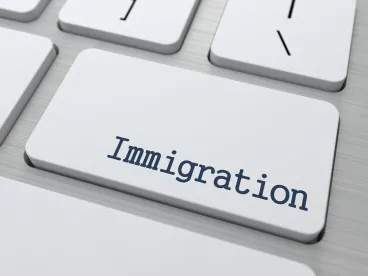On March 23, 2018, USCIS significantly changed its interpretation of the H-1B rules by issuing a policy memorandum adopting the Administrative Appeals Office (AAO) decision Matter of S- Inc. The issue addressed in Matter of S- Inc. is the meaning of the term “related entities” in cases where multiple employers file cap-subject H-1B petitions for the same beneficiary.
USCIS regulations at 8 C.F.R. 214.2(h)(i)(G) provide that “related entities” may not file more than one H-1B cap-subject petition for the same job opportunity on behalf of the same alien in the same fiscal year, or else all such H-1B cap-subject petitions filed on that alien’s behalf by the related entities will be denied or revoked. This regulation was issued to deter employers from engaging in corporate chicanery in order to improve their chances of “winning” the H-1B lottery. The H-1B regulations do not expressly define the term “related entities,” but the regulations parenthetically state that related entities include relationships “such as a parent company, subsidiary, or affiliate.”
In the policy memorandum, USCIS described two entities, S- Inc. and C- LLC, that both submitted H-1B petitions for the same foreign national. USCIS stated that, even though the two entities had different FEINs, operations, locations, management, and ownership, they could still be considered to be “related entities.” Specifically, USCIS found that S- Inc. and C- LLC were related entities because both H-1B petitions contained identical or nearly identical support documentation, including a letter confirming the same end-client and same mid-vendors, statement of work, and job description. Matter of S- Inc. expands the meaning of “related entities” to also include entities sponsoring the same beneficiary for substantially the same job opportunity. Whether two jobs are substantially the same is a fact-based determination that USCIS will analyze based on a totality of the record. Relevant factors include familial ties, proximity of locations, employment history, similar work assignments, and substantially similar supporting documentation.
This USCIS policy memorandum significantly broadens the meaning of “related entities.” In the past, determination of whether entities were “related” was limited to an examination under corporate law, and if there was no relationship between the entities under a corporate law examination, there was no further inquiry into the specifics of the job opportunity. Under the new USCIS policy, a determination of “related”-ness will still include the historical corporate law examination, but will also include a review of the specifics of the job opportunity even if the entities are otherwise unrelated. Effectively, if USCIS determines that a specific job opportunity is the basis of multiple H-1B petitions, the sponsoring employers transform into “related entities” for H-1B purposes regardless of the real world connections between the entities.
An example of two entities, unrelated under corporate law but potentially considered to be “related entities” under this policy memo, is when a contractor and its end-client both sponsor the same beneficiary for H-1B cap-subject petitions for the same role at the end-client’s location. Even though the contractor and the end-client do not share a common owner or control, USCIS may determine they are “related entities” in this case because the job opportunities are substantially the same. If USCIS determines that the job opportunities are substantially the same, then both of the H-1B petitions will be revoked by USCIS because the two sponsoring employers are considered “related entities.”




 />i
/>i
